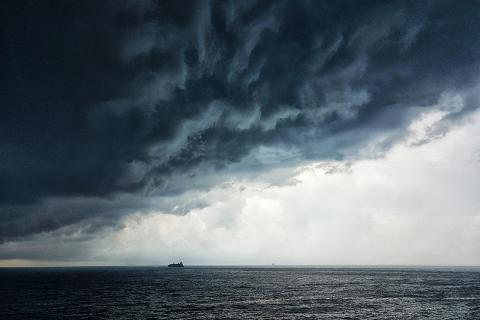Projects researching climate hazards in the UK have been awarded a total of £700,000 by the SPF UK Climate Resilience Programme.
The Present and Future Climate Hazard call, offered through UKRI (NERC), will develop and evaluate new methods and techniques to characterise current and future climate hazards and underlying driving processes, including understanding the robustness of the methods.
The two projects, which will receive up to the value of £350K (at 80% FEC) each, will commence in August and run for 24 months.
The projects to be funded are:
- STORMY-WEATHER: Plausible storm hazards in a future climate, led by Principal Investigator Professor Hayley Fowler of Newcastle University School of Engineering with co-investigators Professor DB Stephenson and Dr J Catto, University of Exeter, Mathematics
- SEARCH: Sensitivity of estuaries to climate hazards, led by Principal Investigator Dr Peter Robins of Bangor University School of Ocean Sciences, with co-investigators Dr M Lewis, also of Bangor University, Professor Tom Coulthard at the University of Hull and Dr Andy Barkwith at the British Geological Survey.
UK Climate Resilience Programme co-Champion, Suraje Dessai, said: “Climate-related hazards such as floods, droughts and heatwaves cause damages and mortality in the UK. Climate change risk assessments have consistently ranked flooding and coastal change as the highest risk to the country now and in the future.
“These two novel projects will improve our understanding of the climate hazards that cause flooding and wind-related damages.”
STORMY-WEATHER
Prof Hayley Fowler, PI of STORMY-WEATHER said: “In STORMY-WEATHER we are producing a new methodology based on different ‘storm’ types to understand the drivers behind changes to extreme rainfall and windstorms. This will produce a set of physically-plausible high-impact storm hazard storylines and metrics that people can use to plan for the future using the latest climate projections from CMIP6 and UKCP18.
“Our storm-type approach will help clarify hazard from different rainfall mechanisms and their scaling rates with temperature, alongside combined wind and rain hazard from storms, as well as their changing nature with warming; characteristics that are vital for planning for impacts (e.g. flooding, infrastructure failure, transport and energy systems, etc.)
“The focus on storm properties is balanced against the need to understand the impact of potential changes to large-scale circulation patterns on storm hazards, e.g. frequency/persistence changes, and, in particular, the possibility of circulation-driven changes to the dominant event type across regions.
“Ultimately, we need better information on how extreme weather events might change in the future on which to make adaptation decisions and STORMY-WEATHER intends to provide this important advance, alongside translating this information into useful tools and metrics for use in climate change adaptation.”
See full project details here.
SEARCH
For SEARCH, PI Peter Robins said: “Recent near-miss flooding in the UK (Dec-2013, Jan-2017) could have been much worse with subtle changes in sea level-precipitation behaviour and timings, although still caused damage costing £500M. Twenty million people living near UK estuaries are especially vulnerable to flooding as sea levels rise combined with extreme storms, precipitation, heatwaves and droughts that are becoming more intense and seasonal.
“SEARCH is a two-year project that will improve methods for simulating compound flooding across different spatial scales and for different catchment and estuary types. Changes in the intensity of flood drivers are expected to affect the hazard and risk; however, changes in their timings relative to one another is also a vital factor.
“SEARCH will use past and new observations with UKCP18 projections of precipitation, temperature, fluvial flows, storm surge and sea level applied to coupled hydrodynamic-groundwater models to simulate flooding hazards. It will evaluate how climate projections downscale to flooding impact, providing crucial inundation and likelihood data for the EA, NRW and SEPA to identify the most vulnerable communities to flooding and to manage their resources during incidence response.
“This project is especially timely considering the increasing socio-economic and environmental value of estuaries, the projected changes in drivers and currently unregulated land-use management.”
See full project details here.
Image: thunderstorm at sea (Dexmac, Pixabay)

